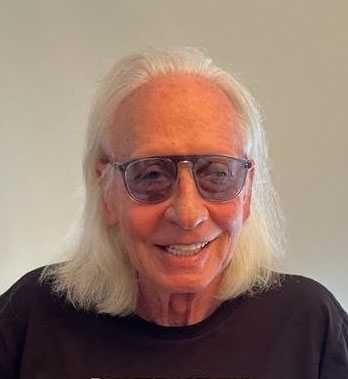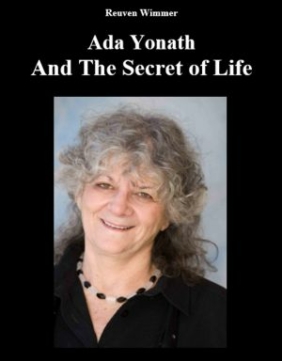The story of Ada Yonath and her ribosomes seems remarkable and deserves to be told to the whole world. I decided that I would write the story despite my scientific amateurism.
When I met Ada Yonath and followed her work, I was sure she would win the Nobel Prize one day. During the days that Ada was in Israel and had free time for me, we sat, and for long hours Ada told me the story of her life and work. I interviewed her family and some co-workers; she was revealed to be a unique person. I had a small plot.
I planned to finish the book upon receiving the prize and then publish it in Israel and around the world in all languages, the book will be snatched, and I will earn millions, at least half of them Will contribute to Ada's research.
Ada Yonath won the Nobel Prize in Chemistry in 2009, I waited Thirteen years, and Ada is still busy to the top, traveling and lecturing worldwide while she continues her scientific work, and I do not know when she will be free to write her book… The present book is the fruit of three years of writing. Since then, Ada has progressed in her work, and in the years since she received the award, there have been many developments in science and medicine following her discoveries.
Maybe she and others will convey/describe her work in another book, probably in more books. I will be content with bringing the story of Ada, from her childhood to the days of receiving the Nobel Prize. And the reader will be pleased.
על ראובן וימר

ראובן וימר נולד בחיפה ב 1937, גדל והתחנך בקיבוץ מזרע ושירת בחטיבת גולני. אחרי גמר השירות עזב את הקיבוץ ועבר ללמוד בירושלים ואחרי כן עבר להתגורר בתל אביב. בשנת 1963 החל לעבוד בתחום הפרסום: תחילה במשרד בינג-ליניאל, אחרי כן בפרסום דחף ולבסוף ... עוד >>
קטגוריות: היסטוריה וביוגרפיות, מדע וטכנולוגיה, עיון
37.00 ₪
מקט: 001-4140-008
Prologue
On a sunny Friday in the spring of ‘97, I sat as usual with the group at the “Kassit café” in Tel Aviv, a kind lady with lots of bags (computer, digital camera, projector, and other accessories) joined our table, and she was received with great joy. Amikam Gurevich proudly announced: “This is Our “Adalleh,” one of the most influential scientists in the world.” Ada smiled modestly and took her regular place at the table. During the time that Ada is in Israel, she does not miss our regular table on Fridays in Kassit.
Kassit Cafe was an old and glorious Tel Aviv institution at its peak in the 1940s. Poets like Alterman and Shlonsky, bohemians, journalists, stage actors, and artists filled it with its owner Hazkel, a man from Kassit, “who watches over everyone with his eyes wide open from his dormant chair.
During the War of Independence, army commanders would arrive, including Yitzhak Sadeh and Yigal Alon. The first celebrations of the eve of Independence Day were also held there. After the death of Nathan Alterman, the second generation of Hebrew Bohemia coffee, Iche Mambush (Mukhtar Ein-Hod), Uri Zohar, Shmulik Krauss, Dan Ben Amotz, the folk poet Yebi. One of the oldest tables in Kassit was Uri Avnery, editor of Haolam haze (“This World” in Hebrew) and, before, also a Member of the Knesset.
Over the years, a nucleus has formed at this table that meets weekly on Friday evenings. Uri Avnery, photographer Rachel Avnery, Uri’s wife as the queen of the table, Amikam Gurevitch, the table manager and the one who corrects everyone’s Hebrew, the soulful painter Dan Kedar, the writers Shlomo Sheba and David Shaham, Yitzhak to the journalists Nehemiah Stresler and guests from abroad In Israel, and I.
The next time Ada came to the table in Kassit, I began my curiosity to “interview” her and asked her what she was doing; she dismissed me with one word: ‘crystallography.’ “Ah,” I said, “in crystals? As in salt as in diamonds?” “I’m a crystallographer of proteins, and it’s something completely different,” she said.
And what is it good for? “I asked,” I will tell you another time, “she said.” Now it’s the other time, “I said,” tell me.”
We stayed to sit in Kassit for a few hours after everyone left. As Ada Yonath told me more, I discovered a magical world unfamiliar to me, the world of molecular biology and the ribosomes, “the cell protein factory in the body.”
I am an advertiser, growing up in the humanities and always getting a “zero yawn” in math and physics.
Algebra seemed tyrannical and arbitrary; the simple fractions just broke me, and only in calculating percentages did I develop in my adulthood my method of calculation because the advertiser lives off the portion of the advertising budget. With organic chemistry, I had some chemistry because it was immediately related to agriculture at the place where I grew up, Kibbutz Mizra in the Jezreel Valley.
Ada tried her best to explain to a layman like me what her wonderful ribosomes were. Still, the despair that came from her eyes at my questions, which testified to my understanding of biology and physics, sent me to the library bench.
At my extreme age, I started reading life science textbooks about bacteria, proteins, chemistry, genetics, and whatnot. I wandered around as if I was possessed by online science sites and filled my head with a considerable amount of both critical and marginal knowledge. This intensive study allowed me to read (slowly) Ada’s scientific articles. And if not understanding them correctly, at least follow her work as much as I can and admire the immense scientific importance of her discoveries, resulting in more than 20 years of tireless research.
I once joked and called the congregation “Madame Curie”[1] (who was one of the few women to win the Nobel Prize and not once but twice!)
Ada responded: “It’s still a long way off, and there’s a lot of politics in it, but if you already mentioned ‘Madame Curie’, when I was a kid, I read the book and went to see this movie twice.”
The story of Ada Yonath and her ribosomes seems remarkable and deserves to be told to the whole world. I decided that I would write the story despite my scientific amateurism.
When I met Ada Yonath and followed her work, I was sure she would win the Nobel Prize one day. During the days that Ada was in Israel and had free time for me, we sat, and for long hours Ada told me the story of her life and work. I interviewed her family and some co-workers; she was revealed to be a unique person. I had a small plot.
I planned to finish the book upon receiving the prize and then publish it in Israel and around the world in all languages, the book will be snatched, and I will earn millions, at least half of them Will contribute to Ada’s research.
Ada Yonath won the Nobel Prize in Chemistry in 2009, I waited Thirteen years, and Ada is still busy to the top, traveling and lecturing worldwide while she continues her scientific work, and I do not know when she will be free to write her book… The present book is the fruit of three years of writing. Since then, Ada has progressed in her work, and in the years since she received the award, there have been many developments in science and medicine following her discoveries.
Maybe she and others will convey/describe her work in another book, probably in more books. I will be content with bringing the story of Ada, from her childhood to the days of receiving the Nobel Prize. And the reader will be pleased.
Structural biology is a field that deals with the study of the structure of large molecules and macromolecules, such as proteins and nucleic acids.
Beyond finding the structure itself, structural biology researchers are trying to understand the mechanism that causes the folding of macromolecules in the living cell.
The issue is of great importance since the macromolecules perform most of the functions in the cell, and their role is disrupted even due to slight changes in the molecule’s three-dimensional structure.
While DNA sequencing or protein sequencing is a relatively simple task in today’s technology, determining the exact three-dimensional structure of proteins, especially of nucleic acids, remains difficult at the forefront of science.
Unlike biochemistry, structural biology does not deal with the kinetic aspects of the chemical reactions in which the molecule participates but only with the structure of the sites where these reactions occur.
היו הראשונים לכתוב תגובה למוצר: “Ada Yonath And The Secret of Life”
יש להתחבר למערכת כדי לכתוב תגובה.


אין עדיין תגובות